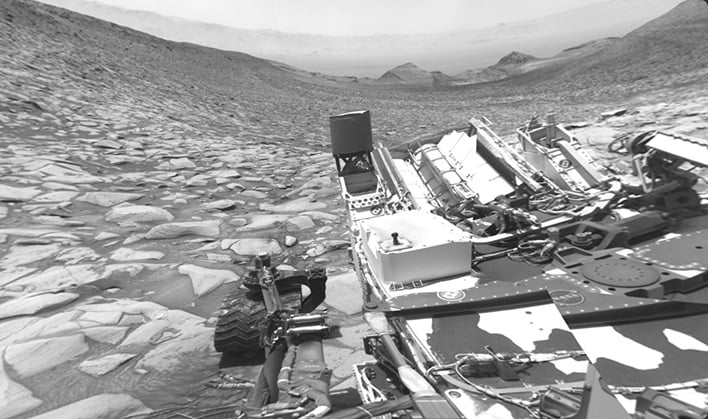Water On Mars? NASA’s Curiosity Rover On The Hunt For Alien Oasis

Scientists believe that billions of years ago, Mars was a much wetter and possibly warm Earth-like planet. While the channel could have been created by high winds, scientists feel it is more likely it was carved out by an ancient river. Those researching the area via Curiosity hope to find evidence of debris flows (rapid, wet landslides), or a river carrying rocks and sediment were the determining factors in the formation of Gediz Vallis channel.
“If the channel or the debris pile were formed by liquid water, that’s really interesting,” remarked Curiosity project scientist, Ashwin Vasavada. “It would mean that fairly later in the story of Mount Sharp - after a long dry period - water came back, and in a big way.”
If Curiosity can find evidence of water cutting the path of Gediz Vallis channel, it would be consistent with a discovery the rove made while trekking up Mount Sharp. According to NASA, that discovery was that “water seems to have come and gone in phases, rather than gradually disappearing as the planet grew drier.” The space agency added that cycles of this nature can be seen in the presence of mud cracks, shallow lakes, and cataclysmic debris flows.
The 360-degree panorama video above was taken by Curiosity on February 3, 2024, and shows the dark sand that fills one side of the channel and debris pile on one side. Viewers can pan the video to the other side and view the steep slope Curiosity had to climb in order to reach the area.
NASA’s Mars Curiosity rover continues to search the landscape of the Red Planet, providing scientists here on Earth hope one day it will return evidence of both water and signs that life could have existed at some point in the planet’s long history.

